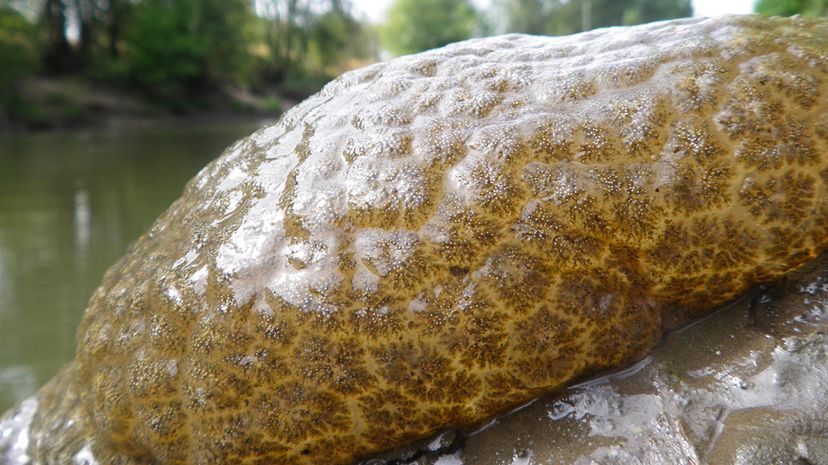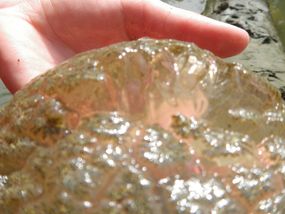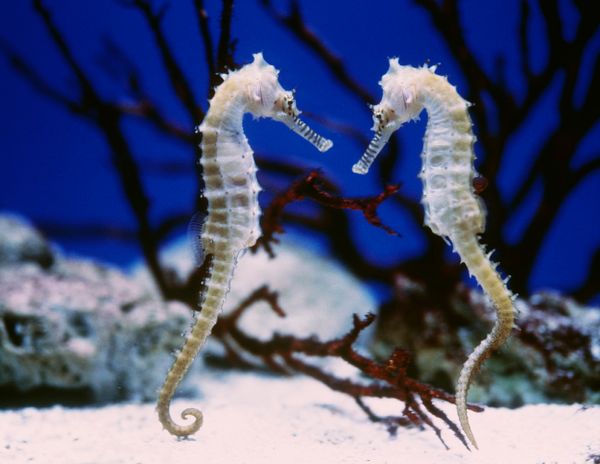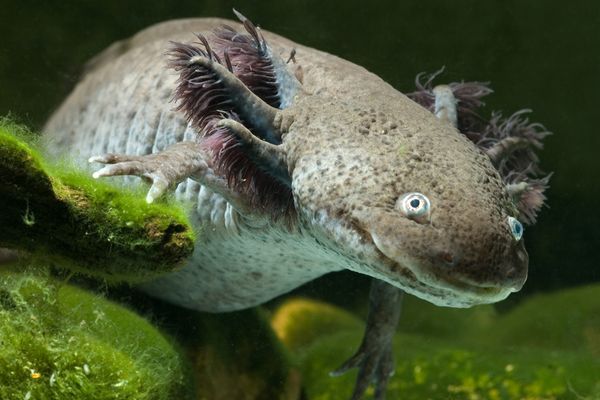
Lagoons are famous for creepy swamp creatures, but in a Canadian park in Vancouver, British Columbia, scientists have found something possibly just as outlandish: a slimy, gelatinous brain blob.
Well, it's not really a brain. And It's not really even an it— it's a collection of tiny creatures collectively called a magnificent bryozoan (Pectinatella magnifica). This colony forms a brain-shaped mass that can grow to be larger than a human head, and I think we can all agree that's also real weird.
Advertisement

Bryozoans, sometimes called "moss animals," are an ancient group of filter feeders — the earliest fossil evidence of one of these colonies can be dated back about 470 million years. Individually, each tiny invertebrate, called a zooid, can just barely be seen with the naked eye — it's only about half a millimeter (0.02 inches) long — but when hundreds of them assemble they can glue themselves together with a special protein to form all sorts of shapes: sheets, columns, and even branched treelike structures.
The colonies start with a single zooid, which asexually reproduces until it's got an entire army of clones to hang out with. Most bryozoan species live in marine habitats, but the one found in Vancouver's Stanley Park belongs in freshwater. It just doesn't really belong in Vancouver, Canada.
This August, the Stanley Park Ecology Society held its annual BioBlitz, a community event in which citizen scientists survey the park, identifying hundreds of organisms in 24 hours. In the Lost Lagoon, the park's biofiltration pond, Blitzgoers discovered the giant, slimy football-shaped bryozoan thousands of miles from home — their usual range is decidedly to the south of Canada, and east of the Mississippi River. Here's a video of the discovery:
It turns out this isn't the first time a magnificent bryozoan has been found in this part of Canada (and nobody can tell whether they're staying), but why they're there is a different question. Like with most migrating organisms these days, warming global temperatures might have opened the door of the Great White North to these (probably) ecologically harmless blobs: They need water temperatures warmer than 60 F (16 C) in order to make a go of it.
Advertisement

